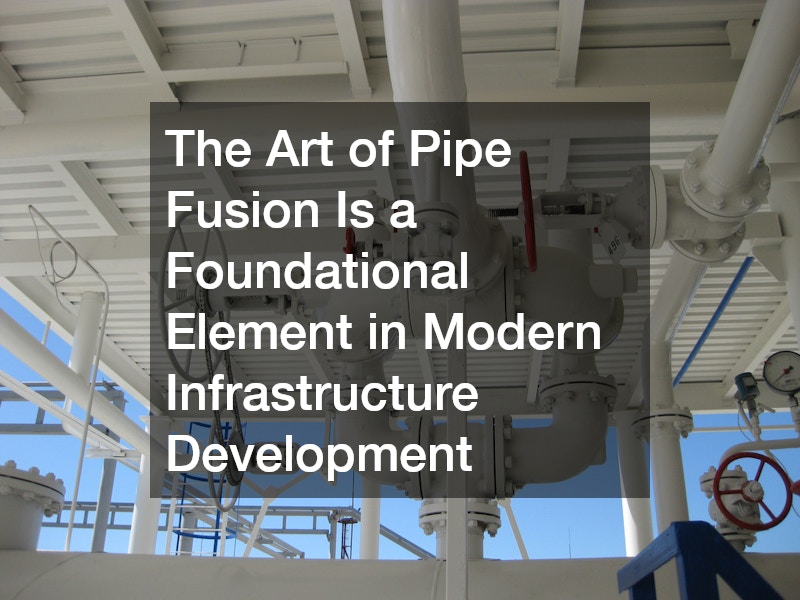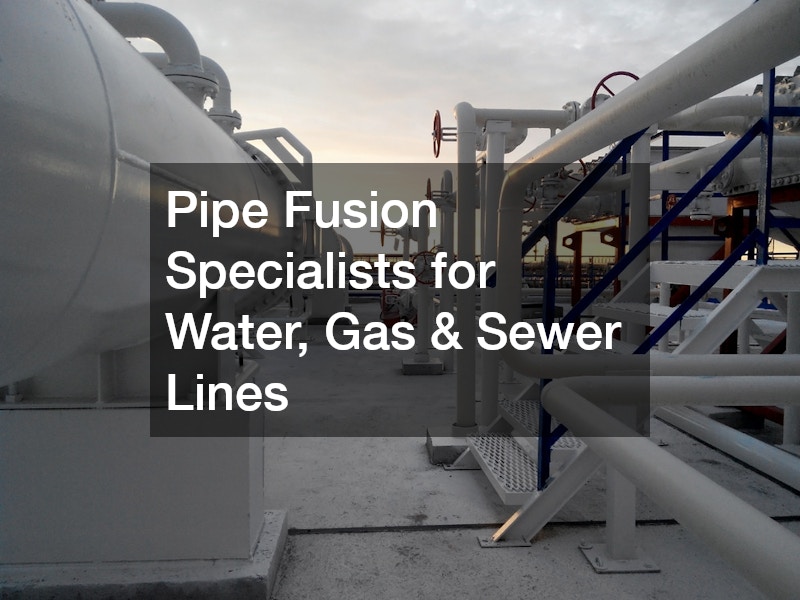Pipe fusion is a critical process in the installation and maintenance of water, gas, and sewer lines. As urban areas continue to expand, the need for efficient and durable piping systems becomes increasingly important. Pipe fusion involves the joining of two pipes together to form a seamless connection that is both strong and reliable.
For specialists in the field, mastering this technique is essential to ensuring the longevity and safety of these crucial infrastructures.
The significance of fusions extends beyond simple construction—it impacts the sustainability and operational efficiency of entire cities. With old infrastructure needing constant upgrades or replacement, fusion offers a cost-effective and durable solution. Utilizing state-of-the-art technology, fusion specialists are able to implement systems that are resistant to leaks and breakage, which can otherwise lead to costly repairs and environmental hazards. Hence, this method is favored by many municipalities for water, gas, and sewer line projects.
An effective fusion process ensures the seamless integration of new piping within existing systems. Professionals in this field are required to possess specialized skills and knowledge, as the accuracy and quality of their work directly affect the efficiency of the whole network. Trained fusion specialists ensure that all joints are correctly fused to minimize the risks of faults within the pipeline. This precision is critical, particularly in high-pressure applications such as gas lines, where safety standards are strictly enforced.
The Process of Pipe Fusion
The fusion process begins with aligning the pipes that need to be joined. This step is critical, as precise alignment ensures a seamless and strong bond. Once aligned, a heating element is applied to the ends of each pipe, melting the surface to prepare it for fusion. Specialists in the field often use advanced fusion machines that ensure the pipes are heated evenly for optimal results.
After the heating phase, the molten pipe ends are pressed together under pressure. Fusion specialists must ensure that this step is executed precisely to avoid any defects in the joint. The bonding is complete after a cooling period, during which the joint solidifies into a single piece of material. This step is crucial, as any interruption during this phase can compromise the joint’s integrity.
Quality control measures are integral throughout the fusion process. Specialists utilize various testing methods, such as visual inspections and pressure testing, to verify the joint’s durability and consistency. Any deficiencies identified during these tests are rectified immediately to uphold safety and performance standards. It is through these rigorous procedures that fusion specialists ensure the reliability of water, gas, and sewer systems.
Applications and Benefits of Pipe Fusion
Pipe fusion is widely used across various sectors due to its versatility and effectiveness. In water line installations, it provides leak-proof connections that prevent water loss and contamination, a crucial aspect for maintaining public health. For gas lines, the strength of fused joints ensures safety by reducing the risk of leaks that could lead to hazardous situations. In sewer lines, the seamless nature of fused pipes minimizes the potential for blockages, facilitating efficient waste management.
The benefits of using fusion extend beyond its robustness and reliability. By reducing the number of mechanical joints required, the risk of joint failure is significantly diminished. This attribute makes fusion a preferred method in harsh and demanding environments. Additionally, the process itself is often faster than traditional methods, reducing labor costs and decreasing the time required for installation projects.
Pipe fusion also plays a pivotal role in the longevity of piping systems. The strong connections formed by the process require less maintenance and are less susceptible to environmental factors such as corrosion and shifting. As a result, municipalities and companies can save on recurring maintenance and repair costs. The durability and cost-efficiency of fusion make it an ideal choice for long-term infrastructure solutions.
The Role of Pipe Fusion Specialists
Pipe fusion specialists are at the forefront of implementing efficient and safe piping systems. Their expertise is crucial in selecting the appropriate fusion techniques and machinery suited to each specific application. By overseeing the entire process, specialists ensure compliance with national standards and best practices. Their meticulous approach helps prevent common issues associated with faulty installations, such as leaks or line breaks.
Continuous training and certification are essential for fusion specialists to stay updated with the latest technologies and methods. By adopting innovations in fusion technology, these professionals can enhance the quality and efficiency of their work. This ongoing professional development ensures that they are equipped to handle the complexities of modern infrastructure projects, maintaining high standards of safety and performance.
The demand for skilled fusion specialists continues to grow as infrastructure needs evolve. These professionals not only provide vital technical expertise but also contribute to the sustainability and resilience of essential services. By delivering reliable and secure piping solutions, they play a key role in supporting the development of urban areas and the well-being of communities worldwide.
The art of pipe fusion is a foundational element in modern infrastructure development, especially in water, gas, and sewer line projects. Its efficiency, reliability, and cost-effectiveness make it an indispensable method for creating durable and secure piping systems. As cities continue to grow and develop, the role of fusion specialists becomes increasingly important in ensuring the integrity and safety of public utilities.
With continual advancements in technology and techniques, fusion will remain at the forefront of piping solutions. It offers a sustainable approach to infrastructure that minimizes environmental impact while maximizing system performance. Emphasizing precision and quality, fusion continues to be a preferred technique in building resilient and long-lasting networks essential to urban life.
As communities invest in upgrading and expanding their infrastructure, the expertise of fusion specialists will be in ever-greater demand. Their skills ensure that the complex systems supporting everyday life remain robust and efficient for future generations. As such, fusion not only supports current needs but also paves the way for sustainable and resilient infrastructure development.


